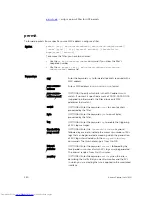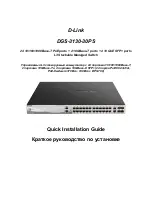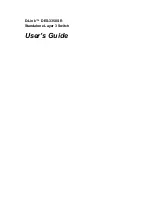
permit (for Standard IP ACLs)
To permit packets from a specific source IP address to leave the switch, configure a filter.
Syntax
permit {
source
[
mask
]| any | host
ip-address
} [count [byte]]
[dscp
value
] [order] [fragments] [log [interval
minutes
]
[threshold-in-msgs [count]] [monitor]
To remove this filter, you have two choices:
• Use the
no seq
sequence-number
command if you know the filter’s
sequence number.
• Use the
no permit {
source
[
mask
] | any | host
ip-address
}
command.
Parameters
source
Enter the IP address in dotted decimal format of the network
from which the packet was sent.
mask
(OPTIONAL) Enter a network
mask
in /prefix format (/x) or
A.B.C.D. The mask, when specified in A.B.C.D format, may be
either contiguous or non-contiguous.
any
Enter the keyword
any
to specify that all routes are subject
to the filter.
host
ip-address
Enter the keyword
host
then the IP address to specify a host
IP address or hostname.
count
(OPTIONAL) Enter the keyword
count
to count packets
processed by the filter.
bytes
(OPTIONAL) Enter the keyword
bytes
to count bytes
processed by the filter.
dscp
(OPTIONAL) Enter the keyword
dcsp
to match to the IP
DCSCP values.
order
(OPTIONAL) Enter the keyword
order
to specify the QoS
priority for the ACL entry. The range is from 0 to 254 (where
0 is the highest priority and 254 is the lowest; lower-order
numbers have a higher priority). If you do not use the
keyword
order
, the ACLs have the lowest order by default
(
255
).
fragments
Enter the keyword
fragments
to use ACLs to control packet
fragments.
log
(OPTIONAL) Enter the keyword
log
to enable the triggering
of ACL log messages.
threshold-in
msgs
count
(OPTIONAL) Enter the
threshold-in-msgs
keyword
followed by a value to indicate the maximum number of ACL
logs that can be generated, exceeding which the generation
of ACL logs is terminated with the
seq
,
permit
, or
deny
commands. The threshold range is from 1 to 100.
Access Control Lists (ACL)
235
















































